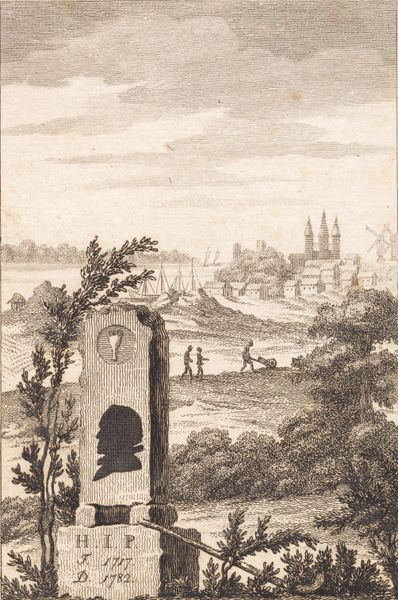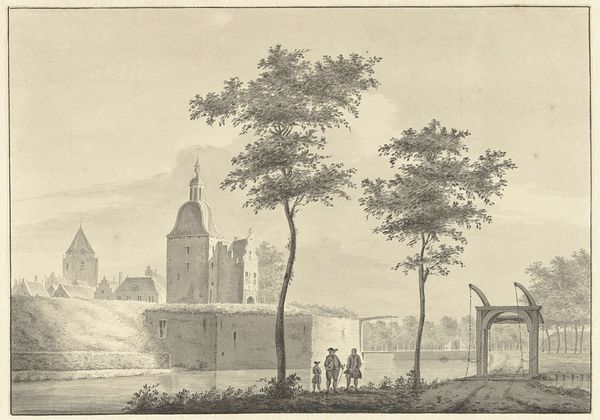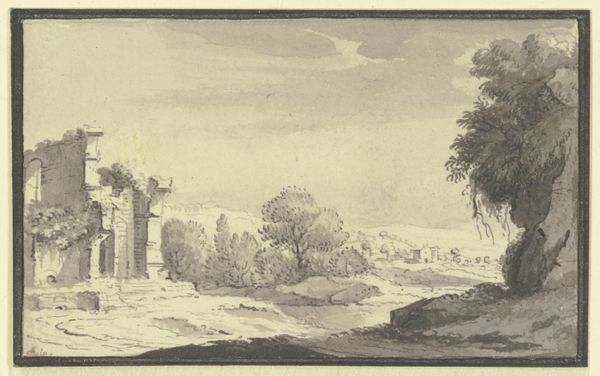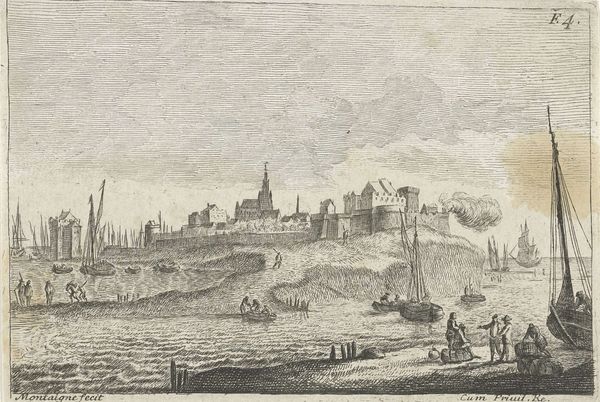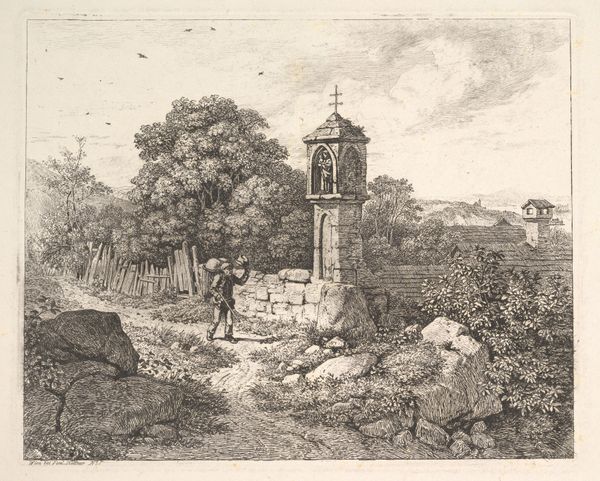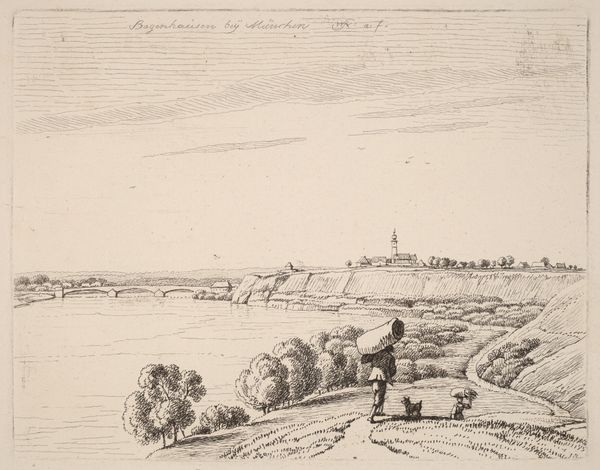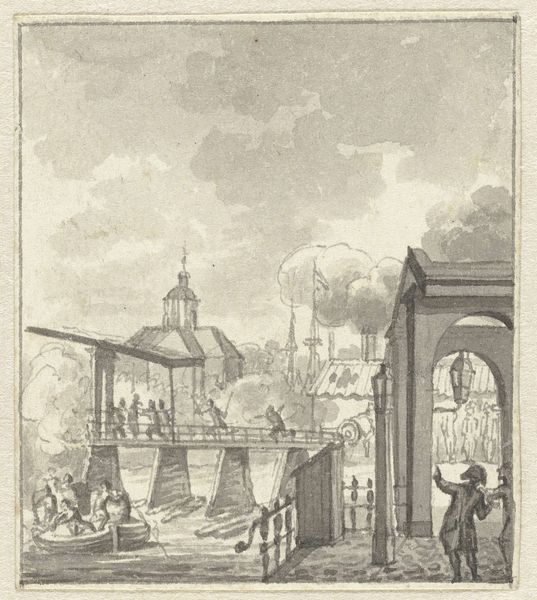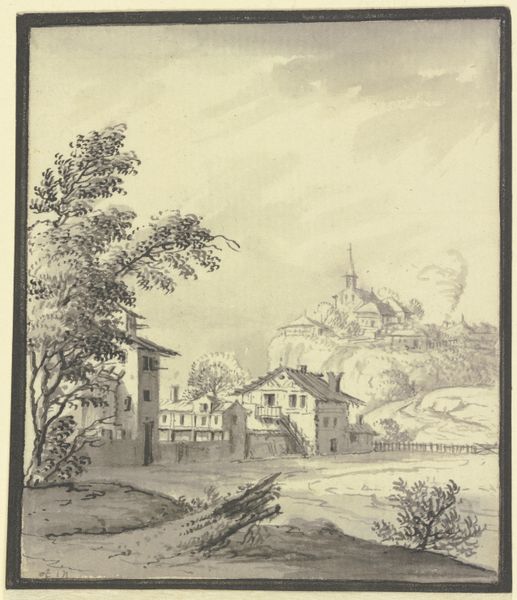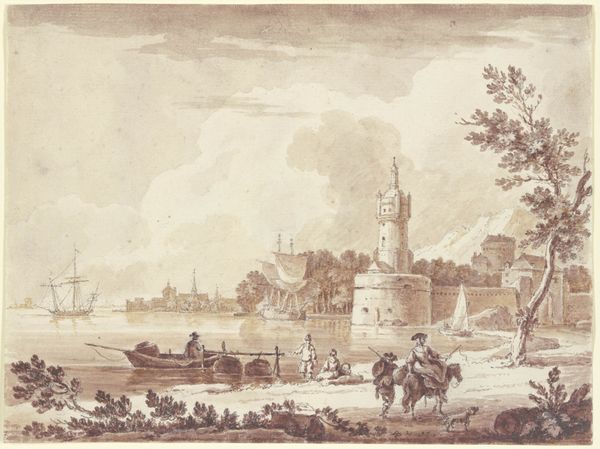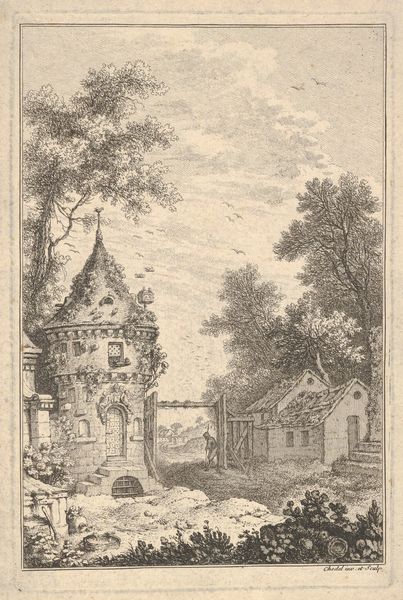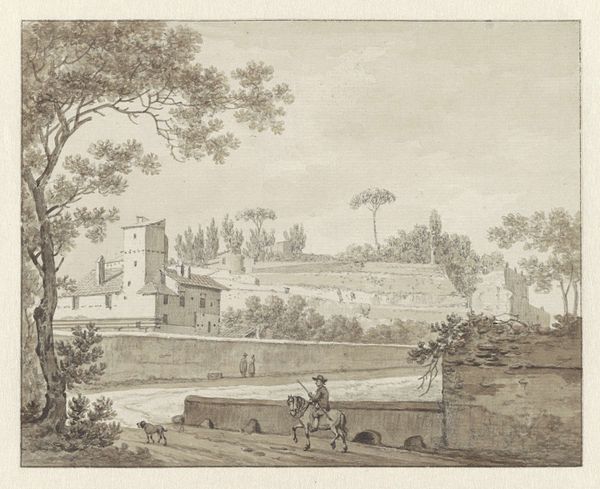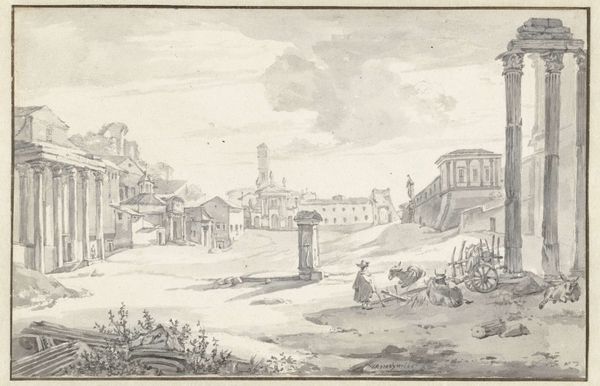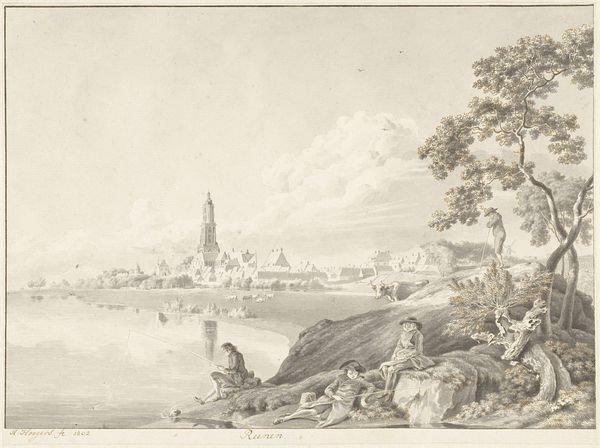
Mindestøtte for Hans Jakob Paludan. Titelblad til "Beskrivelse over Staden Kalundborg" 1788
0:00
0:00
drawing, print, ink, engraving
#
pen and ink
#
drawing
# print
#
landscape
#
ink
#
15_18th-century
#
cityscape
#
engraving
Dimensions: 195 mm (height) x 130 mm (width) (bladmaal), 143 mm (height) x 96 mm (width) (plademaal), 135 mm (height) x 90 mm (width) (billedmaal)
Curator: Welcome! We’re standing before J.F. Clemens’s "Mindestøtte for Hans Jakob Paludan. Titelblad til 'Beskrivelse over Staden Kalundborg'", an engraving from 1788, currently held in the collection of the SMK, the National Gallery of Denmark. Editor: Wow, there’s a lot to unpack here, isn’t there? Immediately, I'm struck by this weird monument dominating the foreground. A sort of fragmented head, or is it just me? And the overall tone feels strangely celebratory but melancholic. Like a party’s over. Curator: Indeed. The print functions as a title page, literally a 'frontispiece', dedicated to the memory of Hans Jakob Paludan, whose profile is silhouetted on the monument itself. Kalundborg, the city, is shown in the background, emphasizing a relationship between the individual and his urban environment. Note the city’s three-towered church serving as the artwork’s central axis. Editor: Okay, seeing Kalundborg gives it context! But that profile… feels so haunting. Carved almost brutally into this monument along with that cup symbol, it looks like something half-finished, disrupted, even? Perhaps mirroring the fragmented nature of memory itself, how we piece together who someone was? Curator: Precisely! Clemens masterfully uses this juxtaposition of public memorial and intimate portrait to invite contemplation on the individual’s legacy within the context of civic history. The figures walking toward Kalundborg suggest movement, change, perhaps even Paludan's lasting influence continuing. Editor: And isn't it fascinating how the entire scene uses incredibly fine lines, giving this delicacy? Almost like memories fading in time! And I am very fond of that little windmill on the right of the city! It gives so much peace to the background image. Curator: The use of fine lines indeed captures the ephemeral quality of memory but also echoes the Enlightenment fascination with precision and scientific observation. Clemens situates Paludan's individual story within a wider landscape, drawing on classical allegory even as it celebrates Danish topography. It shows us how memory, place, and identity are perpetually entwined. Editor: It makes me wonder how we *choose* to remember someone! What parts we engrave in stone versus what fades like ink on paper. Curator: Exactly. What this artwork seems to invite is asking how do we memorialize figures in nuanced ways? How do we use images to consider lives beyond grand narratives? Editor: Yes. It also makes one contemplate time, the subjective nature of history… and to be honest, what image *I’d* pick for *my* own bizarre memorial! I’m going to go wander around and consider which vegetable would best capture the essence of my persona… thanks for opening this window of introspection.
Comments
No comments
Be the first to comment and join the conversation on the ultimate creative platform.
